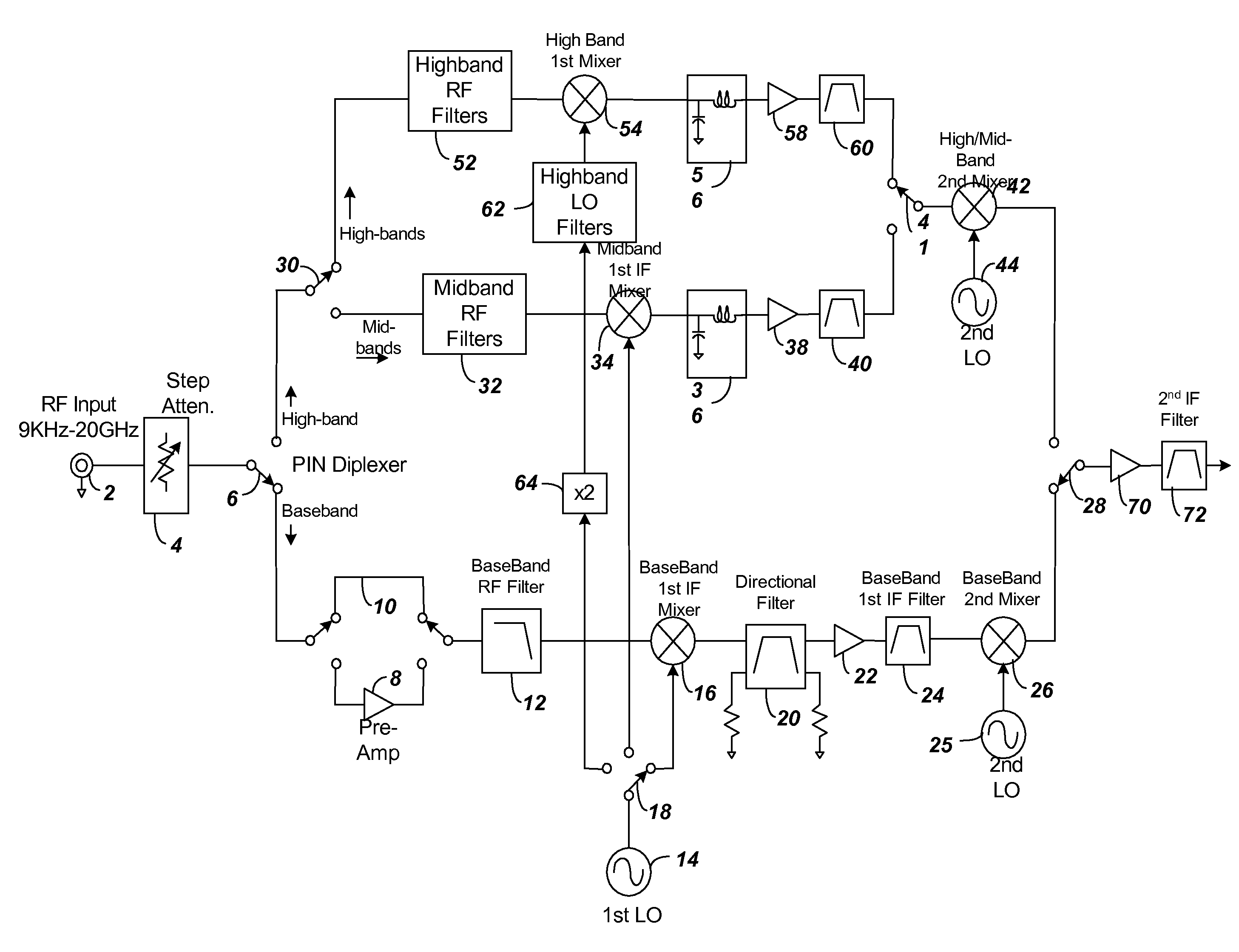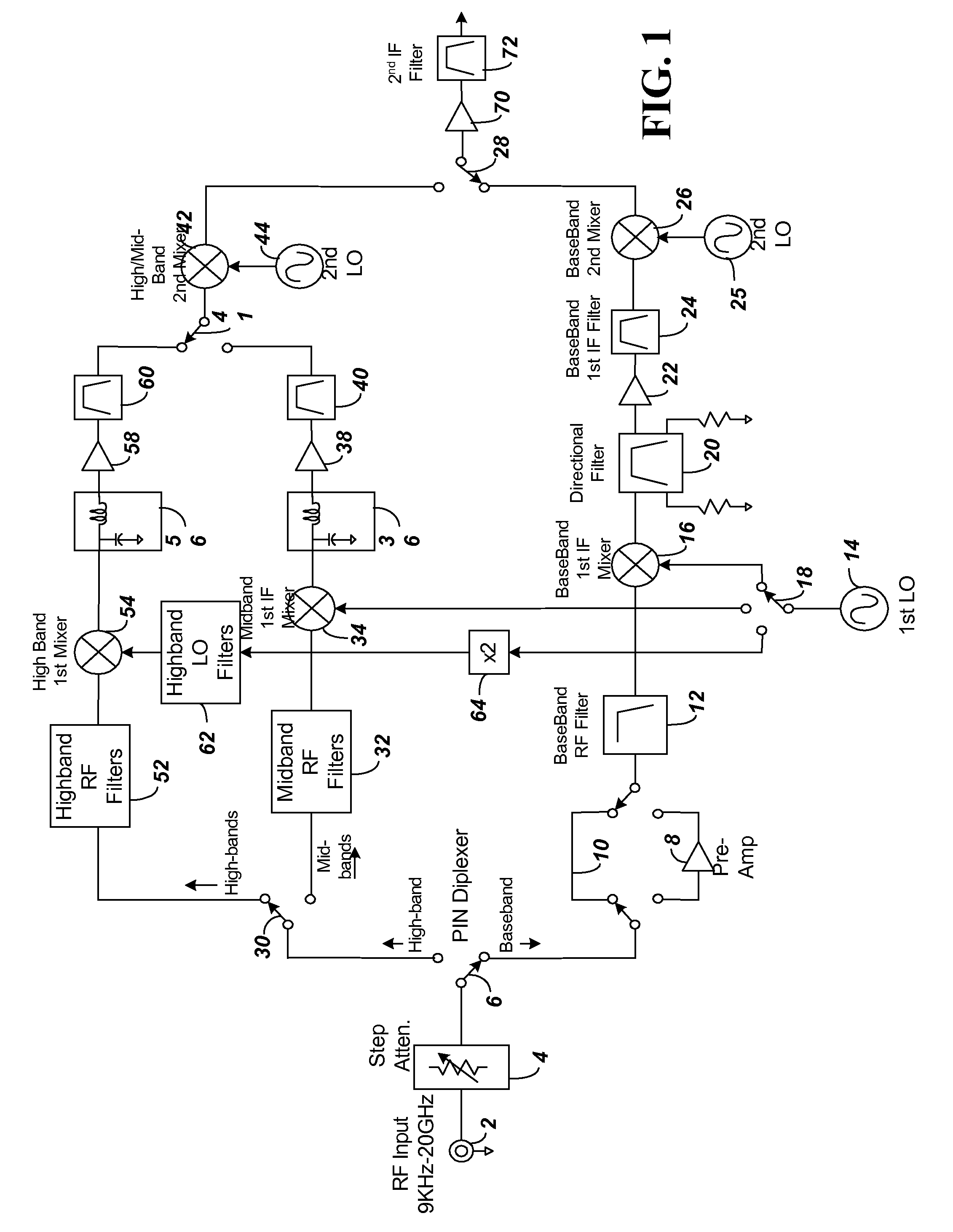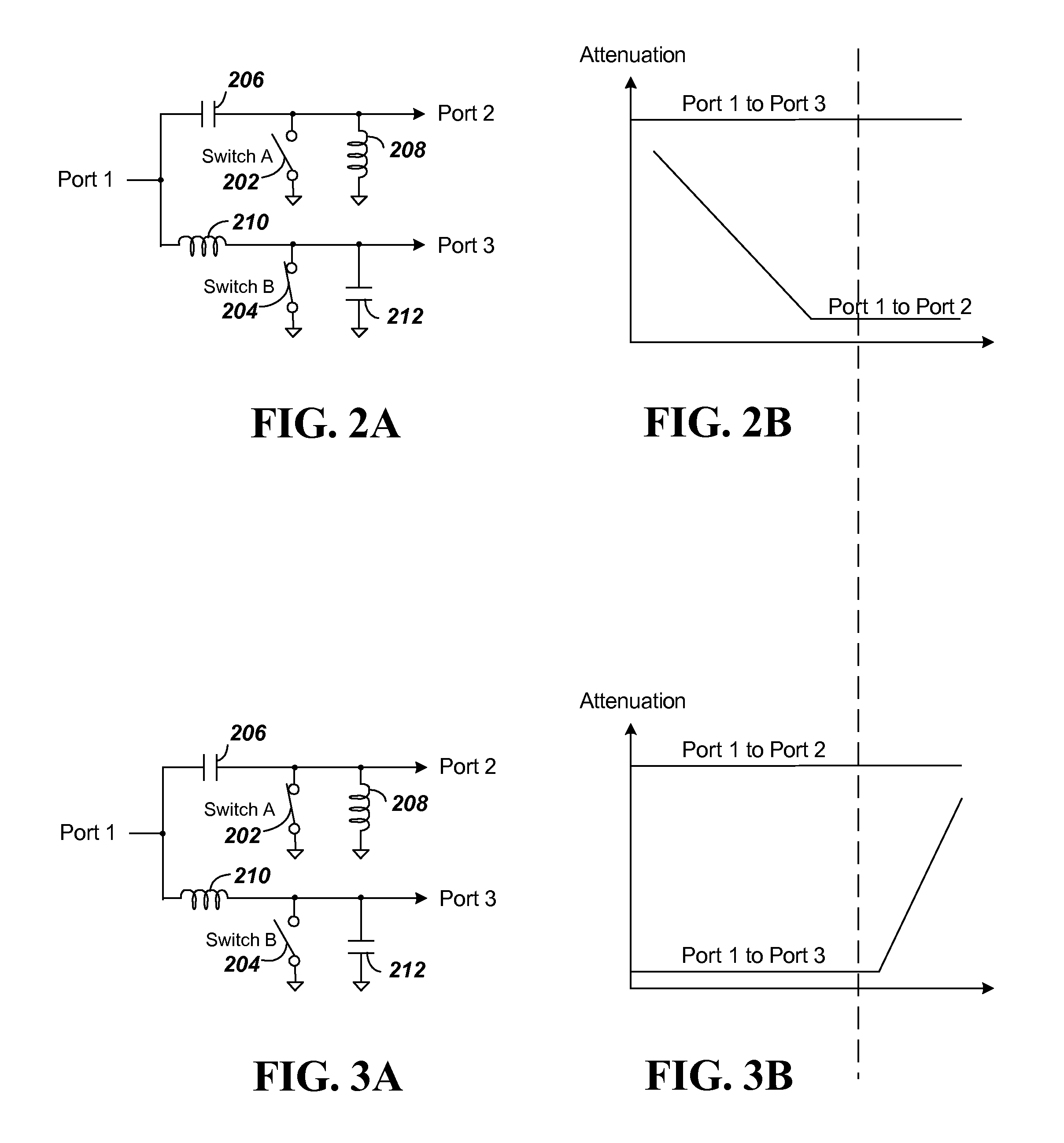HAND-HELD MICROWAVE SPECTRUM ANALYZER WITH OPERATION RANGE FROM 9 KHz TO OVER 20 GHz
a spectrum analyzer and hand-held technology, applied in the direction of instruments, noise figure or signal-to-noise ratio measurement, waveguide type devices, etc., can solve the problems of inability to meet the requirements of a handheld device, the external frequency converter's value can exceed the value of the spectrum analyzer, and the measurement performance or cost is unacceptable, so as to enhance the compatibility of mmic and the pcb, improve the switch performance, and increase the cost of components
- Summary
- Abstract
- Description
- Claims
- Application Information
AI Technical Summary
Benefits of technology
Problems solved by technology
Method used
Image
Examples
Embodiment Construction
[0025]FIG. 1 shows a simplified block diagram of components of a spectrum analyzer according to embodiments of the present invention. The following description along with subsequent figures describes the function of the interconnected blocks of FIG. 1, as well as additional details about components shown in block diagram in FIG. 1.
I. Input Path to Spectrum Analyzer
[0026]An electrical signal to be analyzed enters the spectrum analyzer at port 2 through a coaxial connector. For purposes of illustration, the input is shown from 9 kHz-20 GHz, although an alternative input frequency range can be used. The signal passes from input 2 through to a step attenuator 4. The attenuator 4 for the example shown can provide 0 to 65 dB of attenuation, settable in 5 dB increments. The attenuator 4 is used to adjust signal level to within the spectrum analyzer's useful input amplitude range.
[0027]A. Precision Stand Alone Step Attenuator
[0028]The attenuator 4 is an electromechanical step attenuator tha...
PUM
 Login to View More
Login to View More Abstract
Description
Claims
Application Information
 Login to View More
Login to View More - R&D
- Intellectual Property
- Life Sciences
- Materials
- Tech Scout
- Unparalleled Data Quality
- Higher Quality Content
- 60% Fewer Hallucinations
Browse by: Latest US Patents, China's latest patents, Technical Efficacy Thesaurus, Application Domain, Technology Topic, Popular Technical Reports.
© 2025 PatSnap. All rights reserved.Legal|Privacy policy|Modern Slavery Act Transparency Statement|Sitemap|About US| Contact US: help@patsnap.com



